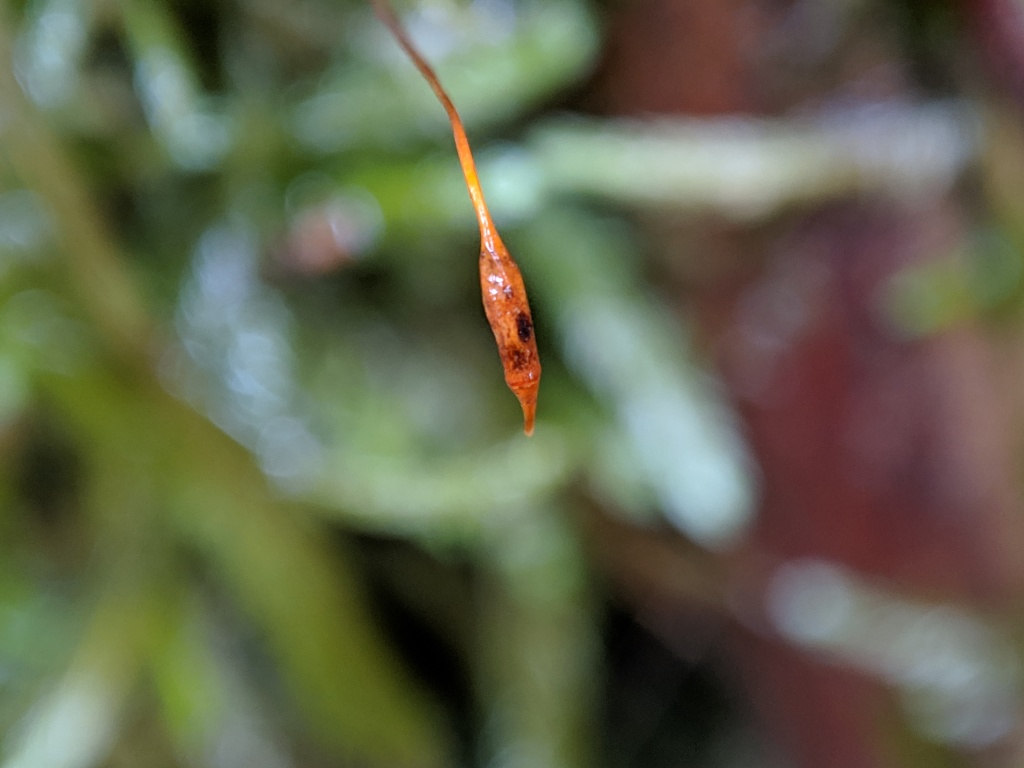Catagoniaceae
Dioicous. Mats on soil, rocks, tree ferns and tree bases. Stems simple or branched, central strand lacking or poorly defined. Leaves erect-spreading when moist, scarcely altered when dry, reduplicate, complanate or terete-foliate (not in Victoria), ± isomorphic; apices acuminate to short-piliferous; costae absent or indistinct, short and double; margins entire or serrulate toward apices (not in Victoria), without a border; laminal cells linear, smooth; alar cells lacking. Pleurocarpous. Capsules exserted, erect or inclined, operculate. Calyptrae cucullate, smooth, glabrous. Opercula conic (not in Victoria) to rostrate from conic base. Peristome double; exostome of 16 entire teeth; endostome of 16 processes shorter or equal to extostome; cilia present.
One genus with 4 species mainly in the Southern Hemisphere but extending north to Central America and the Caribbean Islands.
Catagonium has been alternatively placed in the Phyllogoniaceae (Vitt 1984) or the Plagiotheciaceae (e.g. Lin 1984; Pedersen & Hedenäs 2002). The presence of cilia in the peristome distinguishes Catagonium from Phyllogoniaceae and rhizoids arising from the stem and an absence of differentiated alar cells distinguishes it from the Plagiotheciaceae (Klazenga 2012). Catagonium is also the only pleurocarpous moss with a double peristome with cilia and conduplicate leaves, warranting its placement in its own family (Buck & Ireland 1985). Catagonium is not strongly resolved with either of these families in phylogenetic analyses of DNA sequences (Pedersen & Hedenäs 2002; Tangney et al. 2010; Huttunen et al. 2012) also supporting its placement in its own family.
 Spinning
SpinningBlöcher, R. (2004). Molecular Evolution, Phylogenetics and Biogeography in Southern Hemispheric Bryophytes with Special Focus on Chilean Taxa . Ph.D. thesis, Bonn.
Buck, W. R.; Ireland, R.R. (1985). A reclassification of the Plagiotheciaceae. Nova Hedwigia 41: 89–125.
Klazenga, N. (2012). Australian Mosses Online. 26. Catagoniaceae. http://www.anbg.gov.au/abrs/Mosses_Online/Catagoniaceae.pdf.
Lin, S.-H. (1984). A taxonomic revision of Phyllogoniaceae (Bryopsida). Part II. Journal of Taiwan Museum 37(2): 1–54.
Pedersen, N.; Hedenäs, L. (2002). Phylogeny of the Plagiotheciaceae based on molecular and morphological evidence. The Bryologist 105: 310–324.
Tangney, R.S.; Huttunen, S.; Stech, M.; Quandt, D. (2010). A review of the systematic position of the pleurocarpous moss genus Acrocladium Mitten. Tropical Bryology 31: 164–170.

